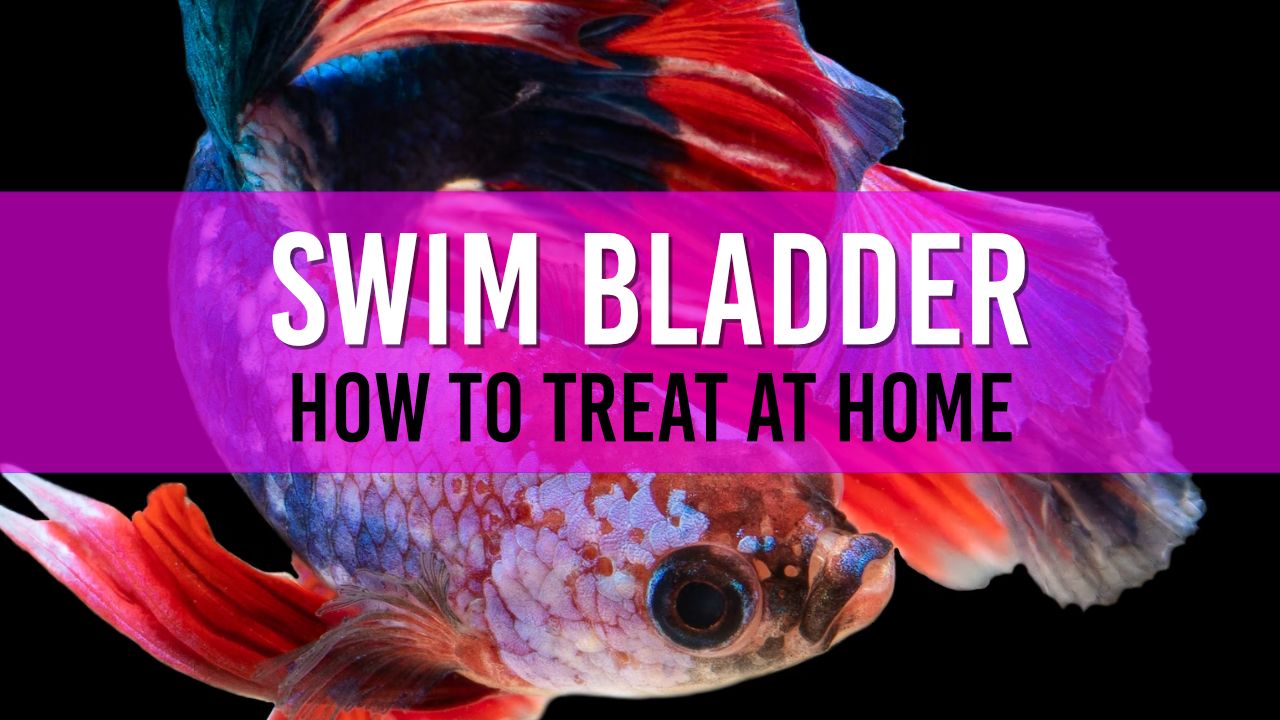How do I treat swim bladder disease in pond fish?
Swim bladder disease in pond fish can be treated by feeding your fish the correct type of food. In some circumstances it might be worth placing your fish in a hospital tank for further treatment.

Table of Contents
Swim bladder disease is a common issue that can affect pond fish, causing them to struggle with buoyancy and making it difficult for them to swim properly. This article will cover the causes of swim bladder disease, how to identify it, and the steps you can take to treat it.
Understanding Swim Bladder Disease
Swim bladder disease is not a single disease but rather a collection of symptoms caused by various factors that affect the fish's swim bladder, an internal organ that helps them control their buoyancy. Common causes include constipation, infection, injury, or even genetic factors.
To treat swim bladder disease effectively, it's essential to identify the cause of the problem. Pay attention to your fish's behavior, as it can help you determine the potential causes of their swim bladder issues.
Identifying Swim Bladder Disease
Some common signs of swim bladder disease in pond fish include:
- Difficulty maintaining buoyancy (floating or sinking)
- Swimming on their side or upside-down
- Inability to swim straight or control their movements
- Bloated or swollen abdomen
If you notice any of these symptoms in your pond fish, it's crucial to take action to address the problem.
Treating Swim Bladder Disease
Addressing Constipation
Constipation is a common cause of swim bladder issues in fish. Feeding your fish a balanced diet can help prevent constipation. For more information on the right fish food for your pond, see What type of fish food should I buy for my pond?
If you suspect constipation, try feeding your fish a diet that includes peas, which can help alleviate constipation. You can also temporarily stop feeding your fish and monitor their condition to see if it improves.
Treating Infections
Infections can cause inflammation in the swim bladder, leading to swim bladder disease. If you suspect an infection, consider using a broad-spectrum antibiotic or antiparasitic medication specifically designed for pond fish. Follow the manufacturer's instructions for dosing and treatment duration.
Providing a Stress-Free Environment
Stress can exacerbate swim bladder issues. To reduce stress, ensure that your pond has adequate aeration, proper water quality, and appropriate water temperature. For more information on pond aeration, see How to add more oxygen to my pond? and for tips on maintaining water quality, see Why is my pond water dirty?
Monitoring and Prevention
Regularly monitor your pond fish for signs of swim bladder issues and take action if needed. Maintaining a healthy pond environment and feeding your fish a balanced diet can help prevent swim bladder problems.
Hospital Tanks - How they can be used to treat fish with swim bladder disease
A hospital tank, also known as a quarantine tank, is an isolated tank used to treat sick or injured pond fish without affecting the rest of the pond population. Using a hospital tank for fish with swim bladder disease can help provide a controlled environment for treatment and recovery.
Why Use a Hospital Tank?
There are several benefits to using a hospital tank for fish with swim bladder disease:
- Controlled Environment: A hospital tank allows you to closely monitor the water parameters and maintain optimal conditions for your fish's recovery. It also enables you to observe the fish's behavior and track its progress more easily.
- Targeted Treatment: By isolating the affected fish, you can administer targeted treatments without impacting the entire pond ecosystem. This is especially helpful when using medications that could potentially harm other pond inhabitants or disrupt the balance of the pond.
- Stress Reduction: A hospital tank provides a calm and quiet space for your fish to recover, away from the stressors and competition of the main pond. Reduced stress can help your fish heal more quickly.
Setting Up a Hospital Tank
To set up a hospital tank for a fish with swim bladder disease, follow these steps:
- Choose an Appropriate Tank: Select a tank large enough to accommodate the size of your fish and any required equipment. A general rule is to provide at least 10 gallons of water for every inch of fish.
- Prepare the Water: Fill the hospital tank with water from your pond to ensure a similar water chemistry. You may need to treat the water with a dechlorinator if you're using tap water.
- Add Filtration and Aeration: Use a sponge filter or a gentle air-driven filter to maintain water quality without creating strong currents that might stress the fish. An air stone or air pump can provide additional oxygenation.
- Monitor Water Parameters: Check the water temperature, pH, ammonia, nitrite, and nitrate levels regularly to maintain optimal conditions for your fish's recovery. Adjust as needed.
Treating Fish with Swim Bladder Disease in a Hospital Tank
Once your fish is in the hospital tank, follow these steps to help them recover from swim bladder disease:
- Administer Medications: If your fish's swim bladder issue is caused by an infection, treat the fish with the appropriate antibiotics or antiparasitic medications, following the manufacturer's instructions.
- Provide Proper Nutrition: If constipation is the cause, feed your fish a diet that includes peas or other high-fiber foods to help alleviate the problem. Temporarily stopping feeding can also help in some cases.
- Observe and Monitor: Keep a close eye on your fish's behavior and progress. Make any necessary adjustments to the treatment plan based on your observations.
- Gradual Reintroduction: Once your fish has recovered, gradually reintroduce it to the main pond to minimize stress. This can be done by slowly acclimating the fish to the pond's water temperature and chemistry over a period of time.
By using a hospital tank to treat fish with swim bladder disease, you can provide a controlled environment that promotes healing and reduces stress. This approach allows for targeted treatment and close monitoring, increasing the chances of a successful recovery for your pond fish.
Summary
In conclusion, treating swim bladder disease in pond fish requires identifying the underlying cause and taking appropriate measures to address it. By maintaining a healthy pond environment and monitoring your fish for any signs of trouble, you can help ensure their well-being.

